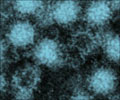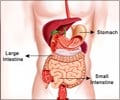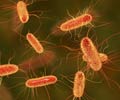Spreading of norovirus can be prevented in children's hospitals by a fucose-based supplement in the diet, study says.

‘Norovirus is the most common cause of gastroenteritis globally. Hence, a fucose-based supplement in the diet stops spreading the norovirus in children's hospitals.’





New research suggests that it may be easier than anticipated to find a
compound that could be used as a food supplement to stop the spread of
norovirus in children's hospitals.Norovirus is the most common cause of gastroenteritis worldwide; it causes tens-hundreds of thousands of deaths each year and is particularly risky for children under three years old. If someone gets norovirus in a setting like a hospital, it's critically important to find a way to protect others from getting infected.
New research suggests that it may be easier than anticipated to find a compound that could be used as a food supplement to stop the spread of norovirus in children's hospitals.
Norovirus causes disease after entering cells in the gut by binding to a sugar molecule called fucose, which is found on cell surfaces as part of the structure that determines human ABO blood types. Fucose is also found in breast milk and other foods. Norovirus can't tell the difference between fucoses that are part of cells in the gut and those that are simply passing through; for this reason, adding a fucose-based supplement to the diet as a decoy could be a way to capture the virus and keep it from infecting cells.
To develop this strategy, however, researchers needed to understand which features of fucose and virus molecules affected how well they attached to each other. In cells, foods, and milk, fucose is rarely found as a single molecule; rather, it's part of chains or networks of sugars and proteins. Franz-Georg Hanisch, a researcher at the University of Cologne, led a project to disentangle these molecular elements and understand what kind of fucose-based product would best distract noroviruses. He started by screening the many types of fucose-containing human milk oligosaccharides (HMOs).
Advertisement
"The binding of the virus is not dependent in any way on further structural elements (of HMOs)," Hanisch said. "It's only the terminal fucose which is recognized, and the more fucose at higher densities is presented, the better is the binding."
Advertisement
"There are procedures for isolating the stuff in quite high yields and high purity," Hanisch said.
The organization of the fucose in fucoidans looks nothing like any fucose-containing molecules found in the human body, but fucoidan nevertheless tightly bound to the virus protein in the team's experiments. This is good news because it means that fucoidan could be a safe and cheap food additive to block viruses from infecting cells. It also suggests that the sky is the limit for researchers to design an even better fucose-containing compound.
Hanisch and his collaborators are therefore now moving on to experiments with live viruses and live organisms. The hope is to eventually have a fucose-based food supplement that could be given to a group of people, like hospitalized children, at the first sign of a norovirus outbreak, to prevent the circulating viruses from entering their cells and causing disease.
"I hope that in about three years we will have a product which can be used in norovirus defense and to go into clinical studies," Hanisch said.
Source-Eurekalert














